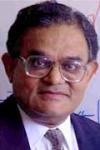


The Electronic Circuits and Systems (ECS) group focuses on the analysis, design, and synthesis of advanced high performance and/or low-power electronic circuits and electromagnetic structures. These range from new millimeter wave and terahertz circuits and devices to complex systems on a chip including mixed signal circuits, RF transceivers, phased arrays, power electronics, and biomedical circuits. We also develop a wide range of electromagnetic structures including micro-electromechanical systems (MEMS), integrated antennas, tunable networks, and periodic structures such as artificial impedance surfaces and metamaterials. Specific areas of current research include:
RF devices and circuits
- III-V and silicon high-frequency devices
- High-efficiency and high-power amplifiers and LNAs at RF and microwave frequencies
- Microwave oscillators and frequency translators (mixers, doublers, dividers)
- Monolithic tunable CMOS RF filters
Mixed signal circuits
- Nyquist-rate and oversampling ADCs and DACs
- “Mostly digital” ADCs
- Analog and “mostly digital” phase locked loops
- Dynamic element matching and mismatch-shaping techniques
- Digital enhancement techniques for analog circuits
Energy systems
- Pico-inverters for grid-connecting photovoltaic arrays
- Energy harvesting/scavenging
- Switched-capacitor DC/DC converters for mobile applications
System on a chip
- Reconfigurable transmitters and receivers
- Wide dynamic range RF receivers for cognitive radios
- Integrated phased arrays at microwave and millimeter wave frequencies
- Active and passive millimeter-wave to THz imaging arrays
- Ultra-low-power transceivers for Body-Area Networks
Applied electromagnetics and microwave structures
- RF micro- and nano-electromechanical systems (MEMS and NEMS)
- Silicon-integrated antennas for millimeter-wave to THz systems
- Anisotropic artificial impedance surfaces for control of electromagnetic effects
- Integration of active electronics and RF MEMS with antennas and EM structures
- Tunable filters and impedance matching networks
- Electrically small antennas for 100 MHz to 6 GHz applications
Optical devices and circuits
- Optoelectronic devices in III-V materials and Si
- High-speed and low-power electronic transceivers for optical communication
- High-speed electronic sampling systems for opto-electronic interfaces
Biomedical circuits
- Low-noise and low-power circuits for biomedical instrumentation
- Transcutaneous power transfer
- Bio-energy harvesting circuits
- Protein, DNA, and small molecule biosensors
- Neural recording and brain mapping systems
The group includes six IEEE fellows, one member of the National Academy of Engineering, and recipients of numerous other awards. We are highly involved in engineering societies, and our members typically hold positions on the administrative committees or as journal editors for the IEEE Solid-State Circuits Society, IEEE Circuits and Systems Society, IEEE Microwave Theory and Techniques society, and IEEE Antennas and Propagation Society. We are involved with multiple research centers on campus, including the Center for Wireless Communications, the Center on RF MEMS Reliability and Design Fundamentals, the California Institute for Telecommunications and Information Technology (CALIT2), and the CALIT2 Nano-3 Lab for microfabrication of solid-state, optical and RF MEMS devices. In addition, our faculty members are well connected to the local electronics, communications, aerospace, and other high-tech industries, often serving on technical advisory boards, and providing consulting for the top companies in these fields. Several semiconductor and communications companies have been started by our graduates.
Our laboratories include state of the art tools for the design, fabrication, and testing of high frequency circuits, systems, and structures. Numerical electromagnetic simulation tools include Ansoft HFSS, Sonnet EM-Suite, IE3D, CST Microwave Studio, AWR Microwave Office, and Remcom XFDTD. RF/Microwave and VLSI design tools include Agilent ADS, Cadence Design Systems software, and others. RF test equipment includes a wide range of signal generators to > 100 GHz, spectrum analyzers to > 200 GHz, bit error rate testers to > 50 Gbps, 2 port and 4 port vector network analyzers operating up to 250 GHz, phase noise measurement equipment to 100 GHz, and very fast oscilloscopes with 40 GHz bandwidth. We also have 8 probe stations capable of RF to > 300 GHz operation, facilities for circuit packaging and assembly, and access to an on-campus machine shop for fabrication of complex packages and electromagnetic structures. We have both far-field and planar near field antenna measurement systems up to 300 GHz, as well as a Faraday cage chamber for low-noise measurements. Ultra-sensitive current and source meters with < 1 fA resolution are available for ultra-low-power measurements.
We have full access to a state of the art microfabrication laboratory (website) for the fabrication of state-of-the-art solid-state, optical and RF MEMS devices. This includes sub-micron lithography and e-beam lithography sputtering and evaporation tools, PECVD, RIE, advanced etching tools, electroplating stations, and a full range of diagnostic equipment (Wyko 3-D profilometer, Dektak, Stress tester, laser cutters, etc.). Also available are three state-of-the-art SEM machines.
Faculty

Ian A. Galton

Drew A. Hall

Tzu-Chien Hsueh

Hanh-Phuc Le

Patrick P. Mercier

Gabriel M. Rebeiz

Daniel F. Sievenpiper
Adjunct Faculty

Prasad Gudem

Madhu S. Gupta
Emeritus Faculty

